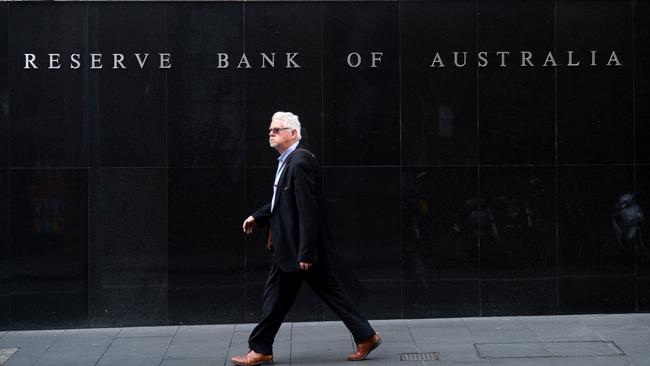
The RBA’s shift in guidance at its April 5 policy meeting happened well ahead of the release of key first-quarter inflation and wage growth data due out over the next seven weeks, data sets that the central bank’s interest-rate setting board were expected to review before indicating any move toward raising interest rates.
RBA board member Ian Harper told The Wall Street Journal in a recent interview that the central bank wanted to see the “whites of the eyes” of an inflation problem before it acted. All that preparedness to wait looks like it has now been ditched.
The National Australia Bank’s March business survey, a closely watched indicator of business conditions and labour costs, reveals in stark detail why the RBA has moved up the timing of its tightening cycle to June.
Labour-cost growth hit 2.7 per cent in quarterly terms, and purchase-cost growth jumped to 4.2 per cent. Both measures are tracking at considerably higher rates than at any other point in the history of the NAB survey.
The RBA conducts its own extensive business liaison program, and it is a safe assumption that the detail in the NAB survey, especially the numbers around rising labour costs, was already known to the central bank.
For the RBA, which was still talking about waiting until 2024 to raise interest rates in late 2021, there is no longer any sense in waiting at least to start removing the 65 basis points of interest rate cuts put in place when the pandemic struck.
The NAB survey, published Tuesday, shows firms are more willing to pass on costs to consumers, with prices rising at their fastest rate in the history of the survey at 2.3 per cent.
The jump in price growth includes prices in the retail sector which rose 3.7 per cent in quarterly terms, suggesting a strong first quarter inflation reading is likely on April 27. This kind of acceleration in prices growth looked likely to extend into the second quarter, NAB added.
“Costs are growing at record rates in the history of the survey,” said Alan Oster, NAB’s chief economist. “Purchase costs reached records with elevated oil prices adding to existing supply chain issues, and labour costs are also rising as businesses hire more workers in a very competitive labour market.
“These cost pressures are very broadbased across industries,” Mr Oster added.
The RBA tweaked its narrative in recent months to focus on rising labour costs, rather than just the narrower measures of wage increases.
While some of the jump in prices is likely to be transitory, such as temporary food price and fuel price increases, the strong economic data in no way supports the official cash rate remaining at its current record low of 0.1 per cent.
Data on Thursday is expected to show Australia’s unemployment rate at its lowest level since 1974, with job vacancies at record levels.
NAB’s overall business conditions index rose nine points in March to +18 points, the largest one-month jump since June 2020.
“Businesses reported very strong trading conditions and a sharp rise in profitability, which indicates demand is continuing to hold up as the economy rebounds from Omicron and growth gathers momentum,” Mr Oster said.
Earlier on Tuesday, data from Commonwealth Bank showed household spending jumped in March, as consumers spent more on transport and travel, leaving behind many of the disruptions brought on by Covid-related restrictions.
Commonwealth Bank’s household spending index jumped 9.2 per cent in March from February to a record high of 117.1.
Most economists expect the first-quarter inflation report to show core consumer prices rising at more than 3 per cent in annual terms, putting it above the target of 2-3 per cent, and providing a trigger to raise interest rates.
But it is labour cost growth that has already forced the RBA out of its comfort zone, and why it is now actively preparing to raise interest rates.
Dow Jones Newswires




A huge jump in business and labour costs in March explains why the Reserve Bank surprised some a week ago by suddenly opening the door to an interest rate rise in June, its first since 2010.